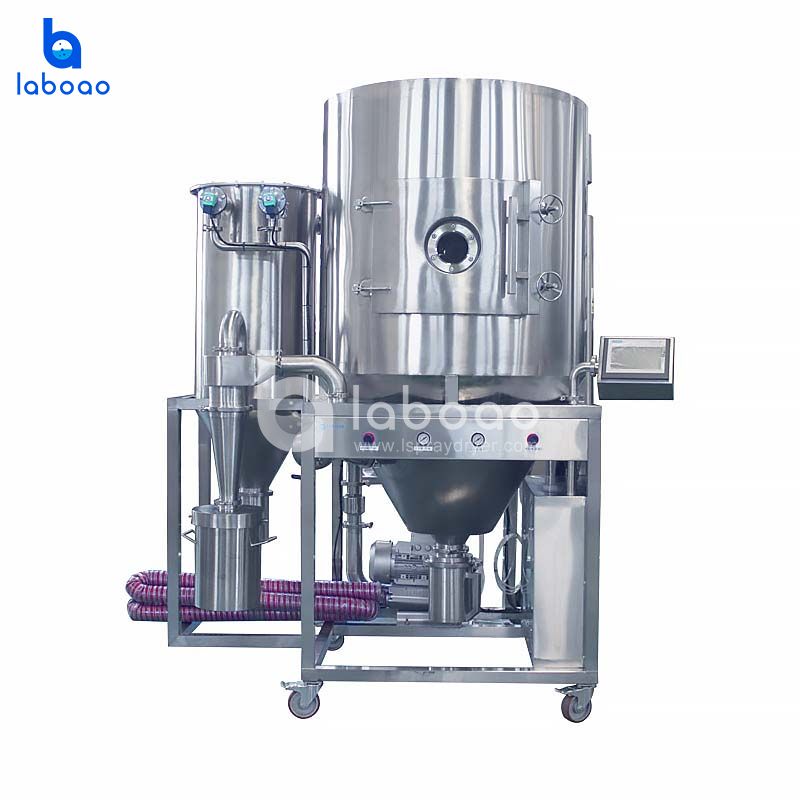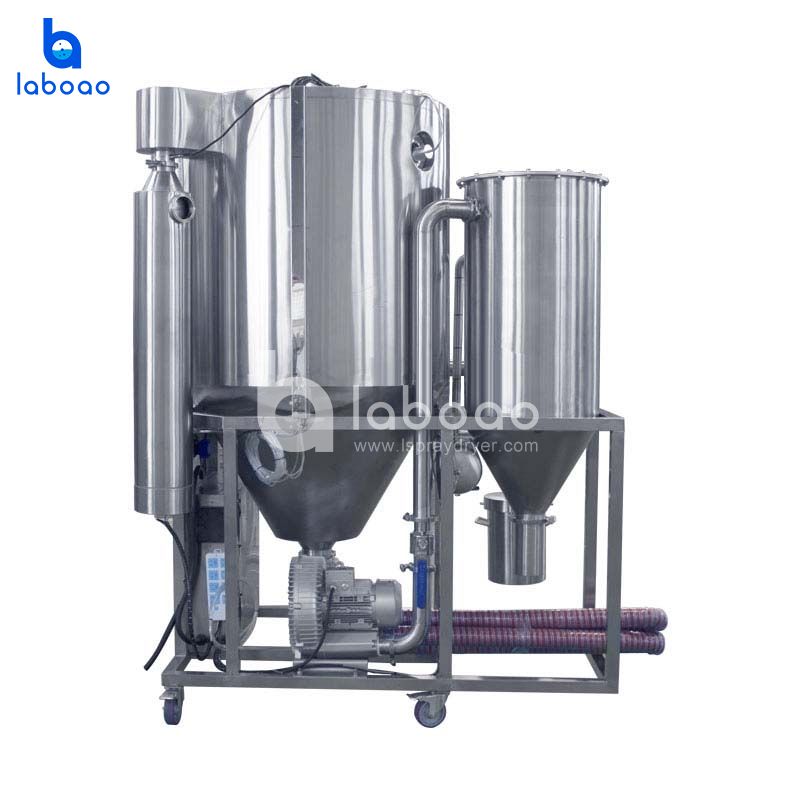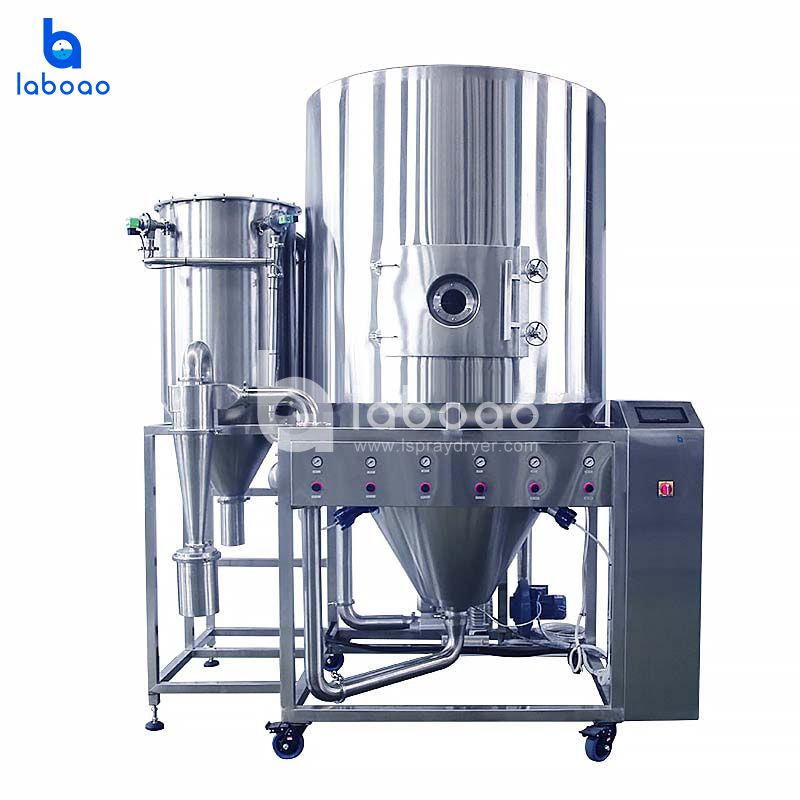OVERVIEW
This spray dryer consists of seven systems, namely feeding system, atomization system, drying tower, material recovery system, heating system, piping system and control system.
The spray dryer is a drying equipment for processing solution, suspension or mud-like materials. The air is sent to the air heater by the blower for preheating, and then enters the spray dryer to be dried in contact with the mist droplets. Part of the product falls into the bottom of the tower to be separated from the gas, and the other part is sucked into the cyclone separator by the induced draft fan, and the tail gas is evacuated after separation. The centrifugal spray dryer mainly uses the high-speed rotation force of the rotary atomizer to throw out the droplets.
Air-flow spray dryers get their name from the use of air-flow atomizers. The working principle of the airflow atomizer is to use high-speed。
The airflow splits the liquid film. Compressed air is used for high-speed airflow. The flow rate of the feed liquid is very low, when the compressed air。
When the gap speed is ejected from the atomizer, there is a large speed difference between the two, which causes friction and shear force between the gas and liquid. The liquid is instantly drawn into slender filaments, and these filaments break quickly at the finer points to form tiny mist droplets.
The centrifugal spray dryer mainly uses the high-speed rotation force of the rotary atomizer to throw out the droplets, which are also dried by hot air and become powder or granules.
This spray dryer is a dual-purpose type of centrifugal and airflow. When the powder is required in the experiment, the airflow type is used. The airflow type has a long service life and is not easy to be damaged. At the same time, this is also the disadvantage of the centrifugal atomizer. When the experiment requires uniform powder or granules Select centrifugal atomization system spray drying.
FEATURES
2. The overall structure of the equipment(Subject to the supplier's final design)
3. Feeding system
The feeding system consists of peristaltic pump peristaltic tubes.
4. Atomization system
The atomization system adopts centrifugal atomizer. The pump sends the material and liquid into the atomizer, and the high-speed airflow ejected from the annular gap of the nozzle atomizes the material and liquid, and the particle size of the droplet can be adjusted by changing the gas-liquid ratio.
5. Drying tower
The drying tower is mainly composed of tower body, cone bottom, volute, gas distributor, temperature sensor, etc.
Evaporation and material properties Design atomization radius, residence time and air volume. In order to avoid material splashing during reclaiming,
The drying tower is operated with slight negative pressure. The upper part of the drying tower is the inlet of the hot air, which is equipped with a volute and a hot air distributor. The hot air is evenly distributed through the hot air distributor and exchanges heat evenly and efficiently with the mist droplets, so that the mist droplets are dried into dry powder products. The temperature sensor is used to record the inlet air temperature and the outlet air temperature.
6. Material recovery system
The material recovery system consists of a cyclone separator and a bag filter. After drying, the gas carrying dust enters the cyclone separator, and the gas-solid separation is carried out by the cyclone. The powder enters the barrel and the gas is discharged from the air outlet and enters the bag filter. The trace ultrafine powder in the gas is effectively recovered by means of cloth bags.
7. Heating system
The heating system consists of air filter, blower and explosion-proof electric heater.
8. Piping system
The piping system consists of induced draft fans and stainless steel pipes.
9. Control system
Taking the programmable controller as the center, it controls various important functional devices and fault alarms: there are two modes of automatic and manual control.





